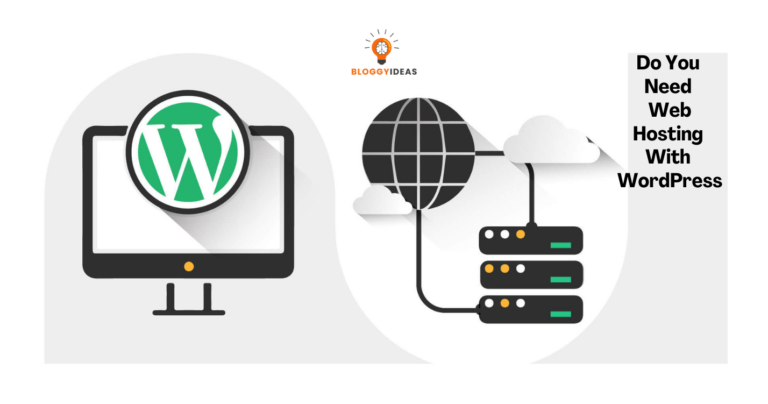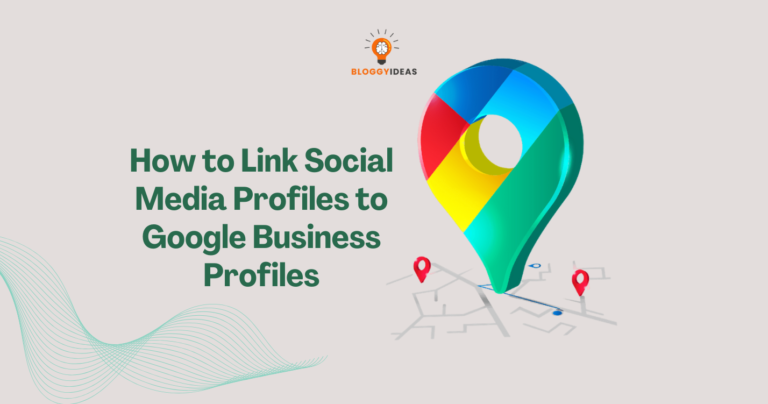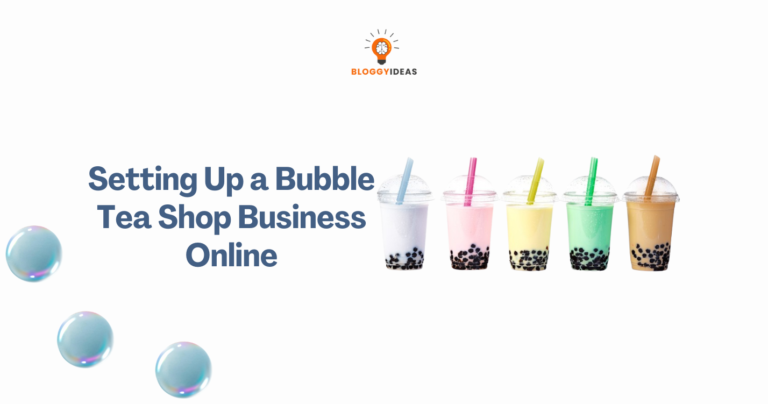How to Create Engaging Content on LinkedIn?
“Quick Overview” LinkedIn has established itself as the go-to platform for professionals seeking to connect, network, and build their personal brand. In this digital era, creating engaging content on LinkedIn has become essential for professionals looking to stand out and make meaningful connections.
By crafting compelling content that resonates with your target audience, you can enhance your professional reputation, build a strong network, and unlock exciting opportunities.
In this guide, we will explore the strategies and techniques to create captivating content on LinkedIn. We will delve into understanding the LinkedIn audience, crafting attention-grabbing posts, encouraging conversation and engagement, and analyzing and optimizing your content for maximum impact.
By following these tips and leveraging the power of LinkedIn, you can create a compelling online presence, establish yourself as an industry expert, and propel your professional growth.
So, if you’re ready to take your LinkedIn presence to the next level, let’s dive into the world of creating engaging content on LinkedIn.
Understanding the LinkedIn Audience
LinkedIn is a unique social media platform that caters specifically to professionals and industry experts. To create engaging content on LinkedIn, it’s crucial to have a deep understanding of the platform’s user base and their professional mindset. Here are key points to consider:
Overview of LinkedIn’s User Base:
- LinkedIn boasts over 740 million members worldwide, consisting of professionals from various industries, job levels, and geographic locations.
- Unlike other social media platforms, LinkedIn focuses on professional networking, career development, and industry-related discussions.
- Users on LinkedIn have a serious and professional mindset, using the platform to build connections, seek job opportunities, and stay updated with industry news.
Identifying Key Audience Segments:
- Start by defining your target audience within the LinkedIn ecosystem. Consider factors such as industry, job title, location, and interests.
- LinkedIn provides valuable demographic and professional data that can help you identify and segment your audience effectively.
- By understanding your audience’s preferences, pain points, and aspirations, you can tailor your content to resonate with their specific needs and interests.
Tailoring Content Effectively:
- Once you’ve identified your target audience segments, create content that speaks directly to their professional goals and challenges.
- Offer valuable insights, share industry news, provide actionable tips, and showcase your expertise in a way that aligns with their interests.
- Use LinkedIn’s targeting features such as geographic targeting, industry targeting, and job title targeting to ensure your content reaches the right audience.
Personalization and Relevance:
- LinkedIn users value personalized and relevant content. Make an effort to understand the specific pain points and motivations of your target audience.
- Craft your content in a way that addresses their needs, offers solutions, and provides valuable takeaways.
- Incorporate real-life examples, success stories, and practical advice to make your content relatable and applicable to their professional lives.
Establishing Thought Leadership:
- LinkedIn is an ideal platform to position yourself or your brand as a thought leader in your industry.
- Share unique perspectives, insights, and industry trends that showcase your expertise and demonstrate your ability to navigate current challenges.
- Engage in meaningful discussions, contribute to industry-specific groups, and actively participate in conversations to build credibility within your target audience.
Researching Trending Topics and Industry Insights
In order to create engaging content on LinkedIn, it’s crucial to have a deep understanding of your audience and stay up-to-date with the latest trends and insights in your industry. This will allow you to tailor your content to their interests and needs, positioning yourself as a valuable resource. Here are some key strategies for researching trending topics and industry insights on LinkedIn:
- Importance of Staying Up-to-Date: LinkedIn is not just a networking platform; it is a hub of professional knowledge and industry news. By staying informed about the latest developments, trends, and challenges in your field, you can provide timely and relevant content that resonates with your audience. This demonstrates your expertise and keeps your content fresh and engaging.
- Utilizing LinkedIn’s Features:
(I) Feed: LinkedIn’s feed is a valuable resource for discovering trending topics and popular discussions. Regularly check your feed to see what industry leaders, colleagues, and influencers are sharing and discussing. Engage with their posts, comment thoughtfully, and share your insights to join the conversation and gain visibility.
(II) Pulse: LinkedIn Pulse is a curated news platform within LinkedIn that showcases articles and posts from various industries. Explore Pulse to discover top articles, insights from industry experts, and thought leadership content. It can serve as a rich source of inspiration for your own content creation.
(III) Groups: LinkedIn Groups are communities of professionals with shared interests. Join relevant groups in your industry and actively participate in discussions. Pay attention to the topics that are generating the most engagement and questions being asked. This can provide valuable insights into the interests and pain points of your audience, helping you shape your content strategy.
- Following Influencers and Thought Leaders: Identify influential individuals and thought leaders in your industry and follow their profiles on LinkedIn. These professionals often share valuable insights, industry news, and thought-provoking content. By following them, you can stay updated on the latest trends, gain inspiration for your own content, and potentially engage with them to expand your network.
- Monitoring Hashtags: LinkedIn allows the use of hashtags, making it easier to discover and categorize content on specific topics. Monitor relevant industry-specific hashtags to find conversations, articles, and posts related to trending topics. This can give you a pulse on what’s currently popular and help you tailor your content accordingly.
- Subscribing to LinkedIn Newsletters: LinkedIn offers various newsletters and email digests that deliver industry news, insights, and curated content straight to your inbox. Subscribe to newsletters relevant to your field to receive regular updates and stay informed about emerging trends and conversations.
Crafting Compelling LinkedIn Posts
To grab the attention of your LinkedIn audience, it’s crucial to create captivating headlines and introductions that entice them to read further. Here are some tips to make your headlines and introductions stand out:
- Be Clear and Concise: Use concise language to convey the main message of your post. Keep your headline short and attention-grabbing, making it clear what the post is about.
- Spark Curiosity: Use intriguing statements or questions in your headline to pique the curiosity of your audience. This encourages them to click and engage with your post to find out more.
- Personalize and Tailor: Customize your headlines and introductions to resonate with your target audience. Address their pain points, challenges, or aspirations to show that your content is relevant to them.
- Use Power Words: Incorporate strong and compelling words that evoke emotions and create a sense of urgency or excitement. Words like “powerful,” “proven,” “essential,” or “exclusive” can capture attention.
Valuable and Relevant Content
Creating valuable and relevant content is crucial to engage your LinkedIn audience and establish yourself as a thought leader. Consider the following strategies:
- Educate and Inform: Share industry insights, tips, and practical knowledge that can help your audience solve problems or gain new perspectives. Offer valuable takeaways they can apply in their professional lives.
- Share Success Stories: Highlight success stories, case studies, or client testimonials that showcase your expertise and demonstrate the value you bring. These stories add credibility and inspire others in their professional journeys.
- Be Authentic and Personal: Share personal anecdotes, experiences, or lessons learned that relate to your professional expertise. Authenticity helps you connect with your audience on a deeper level and encourages engagement.
- Stay Current and Trending: Keep an eye on industry trends and news. Share your opinions, insights, or analysis on relevant topics to position yourself as an informed professional. Engage in conversations about trending subjects to stay relevant.
Utilizing Visuals and Multimedia
Visual content plays a significant role in capturing attention and enhancing engagement on LinkedIn. Consider the following tactics:
- Engaging Images: Incorporate eye-catching images that relate to your content. High-quality visuals, infographics, or charts can help convey information more effectively and attract attention while scrolling through the feed.
- Videos and Slide Decks: Leverage the power of video by sharing informative or inspiring videos that resonate with your audience. Additionally, consider creating slide decks or presentations to present data, statistics, or actionable tips.
- Interactive Content: Use interactive elements such as polls, quizzes, or surveys to encourage audience participation and feedback. These interactive formats not only engage your audience but also provide valuable insights.
- Visual Branding: Maintain consistent visual branding elements such as colors, fonts, and logos across your posts. This creates a cohesive and recognizable brand presence on LinkedIn.
Encouraging Conversation and Engagement
One of the keys to creating engaging content on LinkedIn is to include compelling calls-to-action (CTAs) that prompt your audience to take specific actions. Here are some tips for writing effective CTAs:
- Be Clear and Concise: Clearly state what action you want your audience to take, whether it’s liking, commenting, sharing, or visiting a website. Keep your CTA concise and to the point.
- Use Action Verbs: Incorporate strong action verbs in your CTAs to create a sense of urgency and motivation. For example, “Join the conversation,” “Share your thoughts,” or “Discover more.”
- Offer Value: Provide a reason for your audience to engage with your content. Highlight the benefits they will gain by taking the desired action. For instance, “Learn valuable tips,” “Gain industry insights,” or “Get exclusive access.”
- Ask Questions: Pose thought-provoking questions that encourage your audience to share their opinions or experiences. This can spark conversations and increase engagement. For example, “What are your thoughts on this topic?” or “Have you faced similar challenges?”
Engaging with the LinkedIn Community
To create engagement on LinkedIn, it’s crucial to actively participate in the community. Here are some strategies to engage with the LinkedIn community:
- Join Relevant Groups: Identify and join LinkedIn Groups that align with your professional interests and target audience. Engage in discussions, share insights, and provide valuable input to establish yourself as an authority in your industry.
- Respond to Comments: Take the time to respond to comments on your posts. Show appreciation for positive feedback, answer questions, and engage in meaningful conversations. This demonstrates your willingness to connect and engage with your audience.
- Comment on Others’ Posts: Engage with other professionals by commenting on their posts. Add value to the conversation, ask thoughtful questions, and provide insights. This helps build connections and encourages reciprocation in engagement on your own content.
- Tag and Mention Relevant Individuals: When sharing content or making posts, tag and mention relevant individuals, companies, or organizations. This increases the chances of them seeing and engaging with your content, potentially leading to further exposure and collaboration opportunities.
Leveraging LinkedIn Features
LinkedIn offers various features that can enhance engagement and visibility. Here are some ways to leverage these features effectively:
- Hashtags: Utilize relevant hashtags in your posts to increase discoverability and reach a wider audience. Research popular hashtags in your industry and incorporate them strategically into your content.
- Tagging: When appropriate, tag individuals or companies in your posts to notify them and encourage their engagement. However, use this tactic sparingly and genuinely, focusing on relevant connections and content.
- LinkedIn Articles: Take advantage of LinkedIn’s publishing platform to showcase your expertise and thought leadership. Write and share informative articles on relevant topics, providing valuable insights to your audience. Engage with readers by responding to comments and initiating discussions.
- Polls and Surveys: Utilize LinkedIn’s interactive features, such as polls and surveys, to encourage audience participation and gather insights. This not only boosts engagement but also provides you with valuable data and feedback.
Analyzing and Optimizing LinkedIn Content
To ensure your LinkedIn content is effective and resonates with your audience, it’s crucial to measure its performance. Here are some key steps to measure and analyze your content’s performance:
- Utilize LinkedIn Analytics: LinkedIn provides built-in analytics tools that offer valuable insights into your content’s performance. Access your LinkedIn Page analytics to track key engagement metrics such as likes, comments, shares, and post reach. Analyze these metrics to gauge the level of audience engagement and the overall success of your content.
- Track Conversion Metrics: If your goal is to drive specific actions, such as website visits or lead generation, use UTM parameters or URL tracking to measure conversion rates and the effectiveness of your LinkedIn content in driving those desired actions. Tools like Google Analytics can help you track and analyze conversion metrics associated with your LinkedIn traffic.
- Compare Performance Over Time: Regularly monitor and compare the performance of your LinkedIn content over time. Look for patterns, trends, and spikes in engagement. Identify the types of content that perform well and those that may need improvement. This data will help you refine your content strategy and focus on what resonates with your audience.
A/B Testing and Iterating Strategies
To continuously improve your LinkedIn content and maximize its impact, A/B testing and iterating strategies are essential. Here’s how you can leverage these techniques:
- A/B Test Different Variables: Experiment with different variables in your content to determine what works best for your audience. Test different headlines, visuals, content formats (e.g., short posts vs. long-form articles), posting times, or CTAs. By conducting A/B tests, you can measure the performance of each variable and identify the most effective elements to optimize your content strategy.
- Analyze Data and Insights: Collect and analyze data from your A/B tests to draw meaningful insights. Pay attention to engagement metrics such as likes, comments, shares, and conversion rates. Identify patterns and trends to understand what resonates with your audience and drives the desired actions. Use these insights to refine your content strategy and create more engaging LinkedIn content.
- Iterate and Optimize: Based on the insights gathered from A/B testing and data analysis, make data-driven decisions to optimize your content strategy. Implement changes and improvements based on the variables that performed best. Continuously iterate your strategies to ensure you’re delivering the most engaging content to your LinkedIn audience.
Conclusion
Analyzing and optimizing your LinkedIn content is crucial for maximizing its impact and engaging your audience effectively. By measuring content performance and conducting A/B testing, you can gather valuable insights to refine your content strategy and enhance your LinkedIn presence.
Utilize LinkedIn Analytics to track engagement metrics and conversion rates. Compare performance over time to identify trends and patterns. This data will help you understand what resonates with your audience and enable you to focus on creating content that drives desired actions.
A/B testing allows you to experiment with different variables such as headlines, visuals, content formats, and posting times. Analyze the data and insights gathered from these tests to make data-driven decisions and optimize your content strategy. Continuously iterate and refine your approach to ensure you’re delivering engaging LinkedIn content.
Remember, analyzing and optimizing your LinkedIn content is an ongoing process. Stay informed about the latest trends and techniques, adapt to changes in your audience’s preferences, and consistently evaluate and refine your strategies. By doing so, you can create compelling content that strengthens your professional brand, fosters meaningful connections, and unlocks new opportunities on LinkedIn.
Related Resources:







